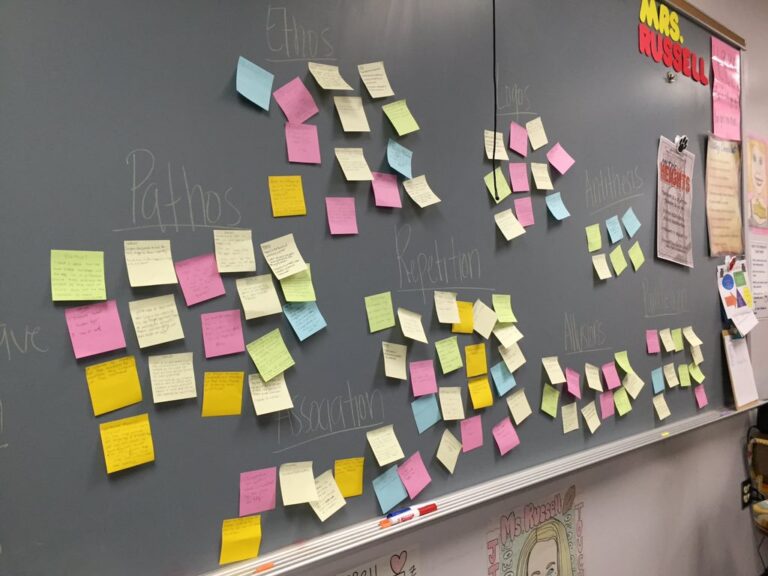Chalkboard Splash
What It Is
Chalkboard Splashes provide a quick way to debrief students’ responses, Quick-Draws, or abbreviated Quick-Writes. In a Chalkboard Splash, which can also be a Whiteboard Splash or a Chart Paper Splash, all students record their responses (or copy their Quick-Writes or Quick-Draws) onto random assigned spots on the room’s chalkboards, whiteboards, or on pieces of chart paper. After recording their responses, students are asked to analyze their peers’ responses for three things: similarities, differences, and surprises.
How It Works
- Create a sentence starter, prompt, or question for which you would like students to see all of their peers’ responses (these can also be used with brief Quick-Writes and Quick-Draws).
- As students generate responses, ask them to copy their responses onto random or designated places on whiteboards or chart papers. (You can give students a limit of 15 words so the activity can move more quickly.)
- Debrief by asking students to walk around, analyze, and jot down similarities, differences, and surprises, perhaps using a 3-column form.
- Ask students to get into small groups and share what they noticed before asking for volunteers to share. Find out what new questions emerged as a result of examining the group’s similarities, differences, and surprises.
How to Ensure Higher-Order Thinking
Chalkboard Splashes are great for addressing the big picture and relevance factor for whatever topic you are teaching. For example, you may want to periodically use Chalkboard Splashes to address the following prompt: “So what? Why is this important?

Source
Himmele P., and Himmele, W. Total Participation Techniques: Making Every Student an Active Learner. ASCD, 2017, pp.47-50.